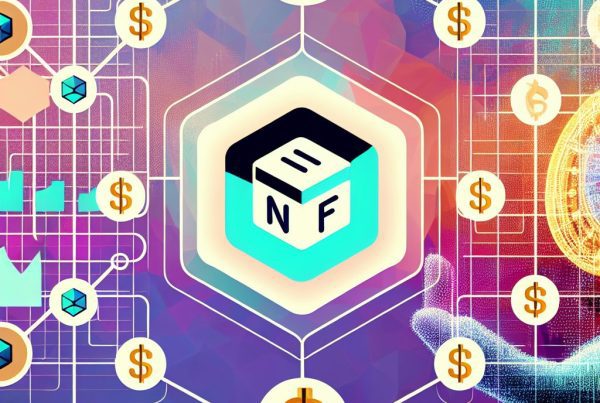What Is a Testnet in Crypto?
The cryptocurrency landscape is vast and complex, with numerous components working together to create a functional ecosystem. Among these components, testnets play a crucial role in the development and deployment of blockchain technologies. Understanding what a testnet is, how it functions, and its significance in the crypto industry is essential for anyone interested in blockchain technology.
Defining Testnets
A testnet is a separate blockchain network that mimics the main blockchain (or mainnet) but operates in a controlled environment. It allows developers to test their applications, smart contracts, and other functionalities without the risk of losing real assets or affecting the main network. Testnets are essential for ensuring that new features and updates are thoroughly vetted before they are deployed on the mainnet.
How Testnets Work
Testnets function similarly to mainnets but with some key differences:
- Fake Currency: Testnets use a simulated currency that has no real-world value. This allows developers to experiment freely without financial repercussions.
- Controlled Environment: Testnets are isolated from the mainnet, meaning any issues or bugs encountered during testing do not impact the main blockchain.
- Community Participation: Many testnets are open to the public, allowing developers and users to participate in testing and provide feedback.
Types of Testnets
There are several types of testnets, each serving different purposes:
- Public Testnets: Open to anyone, these testnets allow developers to test their applications in a real-world-like environment. Examples include Ethereum’s Ropsten and Rinkeby testnets.
- Private Testnets: Restricted to specific developers or organizations, private testnets are used for internal testing before public deployment.
- Forked Testnets: These are created by forking an existing blockchain to test new features or changes. They can be public or private.
Importance of Testnets in the Crypto Industry
Testnets are vital for several reasons:
- Risk Mitigation: By testing on a testnet, developers can identify and fix bugs before they affect real users on the mainnet.
- Cost Efficiency: Testing on a testnet saves costs associated with deploying faulty code on the mainnet, which could lead to financial losses.
- Community Engagement: Testnets allow the community to participate in the development process, fostering collaboration and innovation.
Real-World Applications of Testnets
Testnets have been instrumental in the development of various blockchain projects. Here are a few notable examples:

- Ethereum: Ethereum’s Ropsten testnet is widely used for testing decentralized applications (dApps) and smart contracts. Developers can simulate real-world conditions, including network congestion and transaction fees.
- Bitcoin: Bitcoin has its own testnet, allowing developers to test wallet software and other applications without risking real bitcoins.
- Cardano: Cardano’s testnet enables developers to test new features and functionalities before they are implemented on the mainnet, ensuring a smooth transition.
How to Use a Testnet
Using a testnet typically involves the following steps:
- Choose a Testnet: Select the appropriate testnet for your project. For example, if you are developing on Ethereum, you might choose Ropsten or Rinkeby.
- Set Up a Wallet: Create a wallet that supports the testnet. Many wallets allow you to switch between mainnet and testnet.
- Obtain Testnet Tokens: Acquire testnet tokens from a faucet, which dispenses free tokens for testing purposes.
- Deploy Your Application: Use the testnet to deploy your smart contracts or dApps and conduct thorough testing.
Challenges and Limitations of Testnets
While testnets are invaluable, they are not without challenges:
- Network Congestion: Public testnets can experience congestion, making it difficult to test under realistic conditions.
- Security Risks: Testnets can be vulnerable to attacks, as they often lack the security measures of mainnets.
- Inconsistencies: Differences between testnet and mainnet environments can lead to unexpected issues when deploying on the mainnet.
Future of Testnets in the Crypto Space
The future of testnets looks promising as the cryptocurrency industry continues to evolve. Innovations such as layer-2 solutions and cross-chain interoperability are likely to influence the development of new testnets. Additionally, as more developers enter the space, the demand for robust testing environments will increase.
FAQs About Testnets
What is the difference between a testnet and a mainnet?
A testnet is a testing environment that uses simulated currency and is isolated from the main blockchain (mainnet). The mainnet is the live network where real transactions occur and real assets are at stake.
Can I earn real money on a testnet?
No, testnets use fake currency that has no real-world value. They are designed solely for testing purposes.
How do I access a testnet?
You can access a testnet by setting up a compatible wallet, obtaining testnet tokens from a faucet, and deploying your applications on the testnet.
Are testnets secure?
While testnets provide a controlled environment for testing, they can be vulnerable to attacks and may not have the same security measures as mainnets.
Why are testnets important for developers?
Testnets allow developers to identify and fix bugs, test new features, and engage with the community without risking real assets.
Conclusion
In summary, testnets are an essential component of the cryptocurrency ecosystem, providing a safe and efficient environment for developers to test their applications and innovations. By understanding the role of testnets, developers can mitigate risks, save costs, and contribute to the overall growth of the blockchain industry. As the crypto landscape continues to evolve, the importance of robust testing environments will only increase.
For the latest news and updates in the cryptocurrency world, consider visiting Bitrabo. You can also follow me on social media for more insights: X, Instagram, and Threads.
Disclaimer: The information provided in this article is for educational purposes only and should not be considered financial advice. Always conduct your own research before making investment decisions.
The Crypto Watchlist of the Week 🔎
Subscribe to receive expert-curated projects with real potential—plus trends, risks, and insights that matter. Get handpicked crypto projects, deep analysis & market updates delivered to you.


